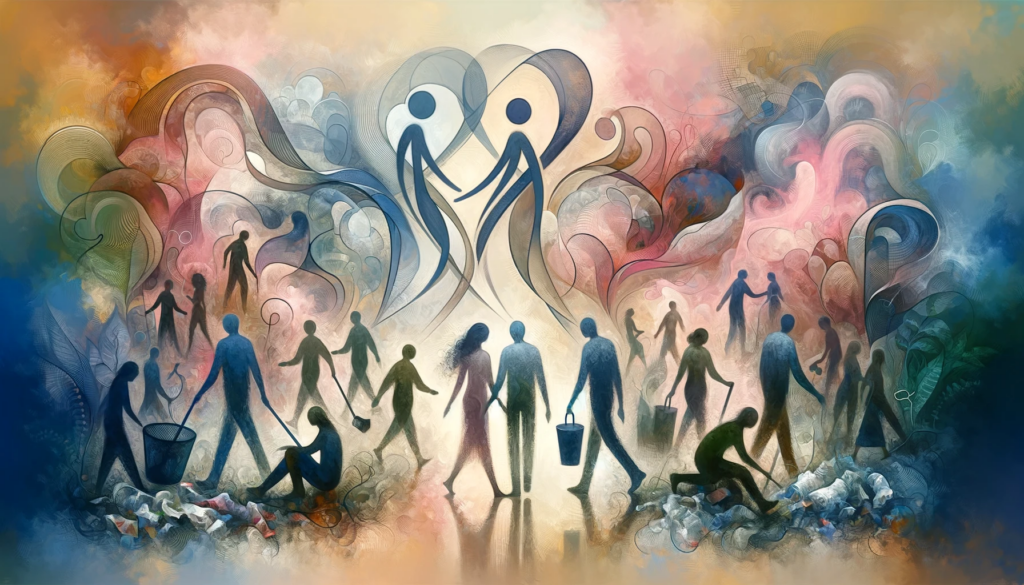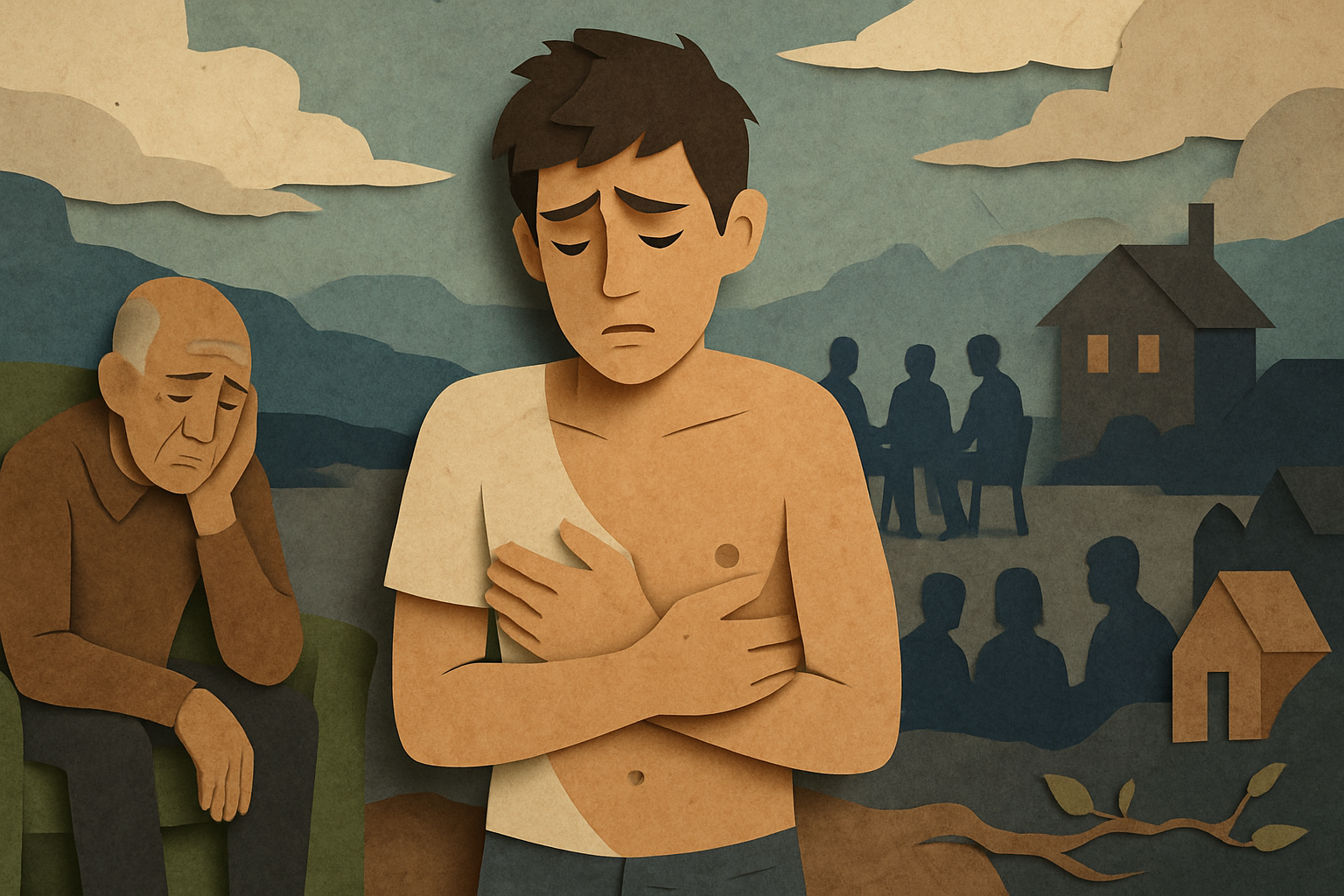READ IT TO ME: Click play to listen to this post.
“Here I am – Do You See Me.”
—KW
Blown by the wind without notice
Others just like me become my blanket
Gathered in a desolate corner
Invisible until we become so many
Scorned with disgust from others
Would someone please rid me of this filth?
There’s a trash can—put me there
Make me out of sight
Make me invisible like the night
But you can’t, cause I’m here just like you
I’m the reality of your imagination
I’m dog shit
People shit
The wrappers of dreams to make me disappear
Straws for smack and blow to get you to forget
But here I am—
You can’t forget me, you must do something about me
I’m the writer who paints your park benches
Your trains, your overpass bridges
Got stuff you don’t get in carts on permanent loan
Sleep in places that scare the hell out of you and me too
Others just like me—in the heat and cold, moan and groan
Wash away the crust
I’m just like you
Broken family, broken dreams
Close your eyes and listen
It’s all the same—so it seems
Just talkin’ trash
Just talkin’ trash
No one wants to be invisible or forgotten. Being unwanted and uncared for is worse than being hungry with nothing to eat. When people are objectified their essential self is invisibilized. People objectify others as sexual body parts to be pursued and conquered or as sources to achieve power, fame, or fortune. People who are takers and not givers reduce relationships to what’s in it for me. Solutions to social dilemmas require a giver mentality. Objectification is about taking. It’s about wanting what you want when you want it. It’s about going through the world seeing only what you want to experience and ignoring the suffering that challenges others.
From Martin Buber’s book, I and Thou, it can be emphasized that when you engage others and the world around you as an “it” you organize and manipulate the world only as you want to see it. Human suffering, social dilemmas, and environmental challenges become obstacles to ignore while material and relational pleasures become objectified. An “it” mentality is a pathway to becoming alienated from the world around you as it is. Buber wrote, “To look away from the world or to stare at it, does not help a man to reach God; but he who sees the world in Him stands in His presence.” There is a sense of spiritual connection that occurs when what you see and experience in the world around you connects with what is in you. It becomes a source for “thou” relationships which holds great respect for others problems and challenges in life.
Everyone needs a safe and trusting community to be seen. Here, vulnerability and trust are serendipitously expressed through our grief, joy, and challenge. I don’t know anyone who exemplifies this truth more than Sally, a client I once had.
Sally had every reason to isolate and avoid the community when she first came to see me in my office. Emotionally, she was fragmented. She suffered horrendous physical, ritual, and sexual abuse from her parents who were involved in a cult. Her parents solicited her to other members of the family and cult. She experienced everything that would make a family unsafe. She fled from this frightful gruesome family to a life on the streets.
While learning plenty of street savvy, she also learned to stuff her sorrows and the sadism she’d experienced throughout her childhood with a cocktail of addictions. When she initially sought professional counsel, she experienced more abuse and betrayal from those who were supposed to be healing and safe. She learned to deaden herself to the world at large and to disconnect from the community. Eventually, she decided to attend our intensive outpatient program, which involves sixty-five hours of therapy in 8 days.
When she began her plunge experience, there was no trust, only desperation. However, as the days unfolded, her barriers began to come down. Maybe it was the intensity of one session after another beginning at 7:00 a.m. and continuing until 8:30 p.m. It could have been the many different approaches that her relentless counselors used. Whatever it was, she reached a watershed point where she decided to open her heart to the possibility of healing. As she progressed throughout the week, she decided that this would be her last attempt to find hope. She decided that she would do whatever it took to get healthy.
As she became committed to healing herself, she committed to integrating her fragmented inner self. She embraced the emotional pain that dominated her life, rather than medicate it with addiction. She resolved to attend 12-Step meetings to address her compulsive behaviors. Though dominated with fear and full of anxiety, slowly she shifted and allowed her 12-Step community to become a touchstone and signpost for reality in her recovery. Sharing her brokenness in the community provided relational safety for Sally.
When there is relational safety in the community, anything and everything can be explored and sifted and sorted through. Pain becomes the fellowship’s touchstone and signpost indicating an imbalance in life. The community provides a sound studio to listen to pain’s message. Common shared brokenness is its draw, not common likeness or interest. Becoming emotionally naked by sharing our deepest feelings and secrets is commonplace and expected. It’s a space where we can fit in and be accepted as we are. It is a sanctuary in which to learn how we can wear our own skin well. It’s a space to accept our own acceptance while staring at imperfection. It is a place to grow ourselves into adult maturity and discover inner brilliance.
Today, after many years of recovery and therapy, Sally has carved out a commitment to a 12-step community based on a shared brokenness that has proven supportive and sustaining. Today, though she continues to work out her emotional brokenness, she has become an inspiration to those who work with her professionally. She has become a leader in her field of expertise. Her husband and children continue to benefit from her resilience and commitment to her healing journey.
Recently, she told me her recovery life has rendered her 1,000 percent improved. She echoed that without a community to share her deepest feelings of brokenness, in concert with therapeutic intervention, her road to recovery would have led to a dead end.
There are thousands of Sally’s in the world around you including the homeless. My wife Eileen and I have chosen to live in a neighborhood where homeless people live all around us. Each morning we walk our dog through our neighborhood streets. We pick up trash and dog poop with our sanitary gloves as we make our way. Along the canal that we walk there is graffiti painted on park benches and backyard walls. There is trash all around including dog and human feces. At first, it was disgusting. Over time, I have learned that the trash has a voice that represents the many unfortunate ones. The trash is their voice to tell me and you that “I am here. Don’t forget me. Please see me!”
Do you know someone you would describe as forgotten? When you drive to work, worship, or play, do you notice the street people in your community? Not knowing what to do with misfortune, many look away from the homeless, choosing to deal with discomfort by distancing themselves from it. What about the person at the grocery store who shuffles by with a blank stare on his face? Do you think of him as invisible?
Today every piece of trash I pick up, I hear the voices of so many on the streets and elsewhere saying please treat me as a “Thou.” Just talkin’ trash!





